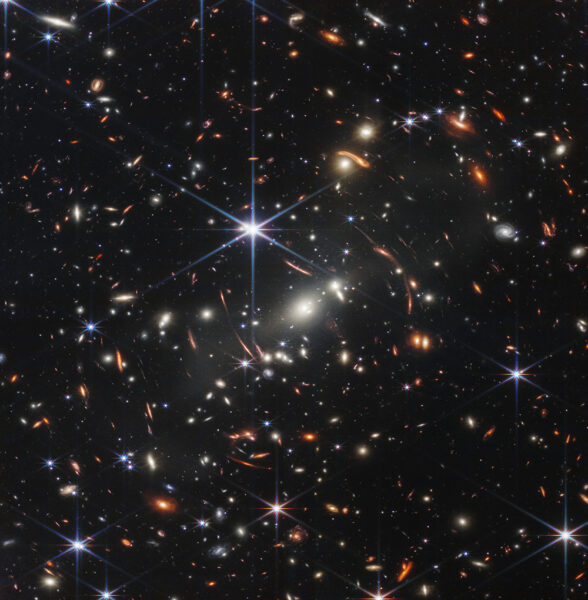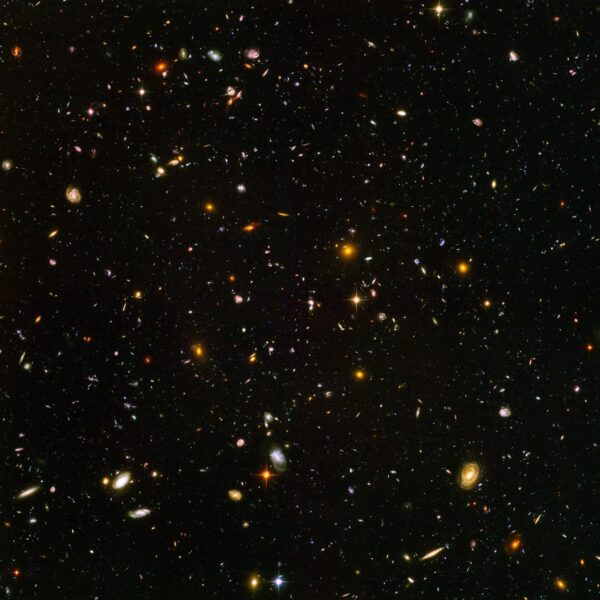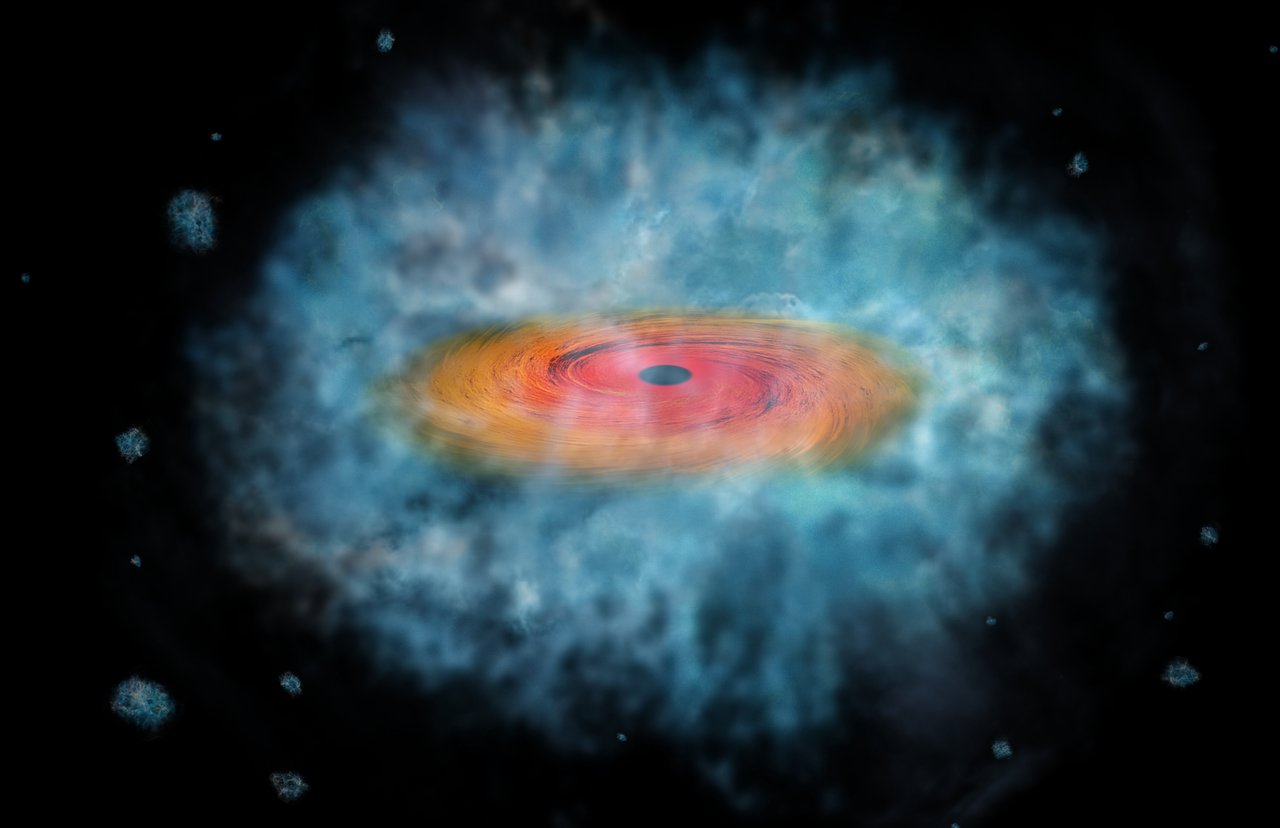

NASA / ESA / CSA / STScI
On Monday and Tuesday, July eleventh and twelfth, the James Webb House Telescope staff launched the observatory’s long-awaited first pictures. From a Jupiter-size planet simply 1,150 light-years away to galaxies residing within the early universe, the photographs characterize the tip of the iceberg — now we have a lot extra to stay up for.
In its first 12 months, Webb will take 6,000 hours of observations, amounting to 250 days’ value of nonstop cosmic revelation. Greater than half of this time will go to small packages, every of which is able to obtain at most 25 hours. By the top of the primary 12 months, we’ll have hundreds of targets — starting from comets to planets to distant galaxies — with unprecedented infrared imagery and spectroscopy.
Right here’s what the primary 12 months of observations might inform us, as instructed from the angle of a collection of science packages within the queue.
Closing in on Lava Worlds
This video exhibits an artist’s impression of the super-Earth 55 Cancri e shifting in entrance of its guardian star.
ESA / Hubble, M. Kornmesser
Seventy of the accepted proposals concentrate on exoplanets, many of those on particular person targets starting from scorching Jupiters to “super-puffs” (gasoline giants which are larger than they must be) to scorching rocky worlds.
The lava world 55 Cancri e is likely one of the latter. The planet has the mass of 8 Earths and orbits searingly close to a Solar-like star, 100 instances nearer in than Earth is to the Solar. Though it was found in 2004, there’s so much we nonetheless don’t learn about this alien world. Is it naked rock or is it enveloped by a swirling environment? And if it’s naked, might it nonetheless host vaporized minerals launched from its magma floor? Is it tidally locked, displaying just one face to its solar, or does its rotation overlap its orbit in a 3:2 resonance as Mercury’s does?
These are the questions that Alexis Brandeker (Stockholm College, Sweden) and colleagues search to reply with simply over a dozen hours of Webb observations, which he expects in November.
A naked, rocky world would have a silicate crust, as Earth does, however 55 Cancri e is so blazing scorching that these silicates would vaporize from its molten floor within the day and fall again to the floor at evening as lava rain. Webb will take a spectrum of the skinny sliver of vapor that surrounds the planet, which turns into seen because the planet passes in entrance of its star. A number of spectra might detect the silicon oxide gasoline on the dayside and the silicon dioxide crystals that fall within the night.
If, alternatively, the planet does have an environment, Webb will see a spectral signature that may assist examine that gaseous envelope as an alternative. Characterization of surfaces and atmospheres will likely be Webb’s key contribution in its first 12 months, Brandeker says.
“I am excited to see lovely spectra of a complete array of exoplanets with JWST!” agrees Caroline Morley (College of Texas, Austin), who was concerned in a proposal to watch one other scorching rocky exoplanet, LHS 3844b. “We’ll study detailed new issues about bigger planets (Jupiter and Neptune-sized), together with their atmospheric compositions and climates. For smaller, rocky planets like LHS 3844b, I am significantly excited to see what the composition of the floor seems to be like.”
This artist’s animation depicts the exoplanet LHS 3844b, which is 1.3 instances the mass of Earth and orbits an M-class star.
NASA / JPL-Caltech / R. Harm (IPAC)
Not like 55 Cancri e, LHS 3844b is nearly definitely naked rock. Morley, staff lead Laura Kreidberg (Max Planck Institute for Astronomy, Germany), and colleagues will discover it utilizing a way referred to as emission spectroscopy. Meaning the sunshine that Webb will seize comes from the planet itself — one thing that turns into extra possible at infrared wavelengths, by which stars shine much less brightly.
“With JWST, we’ll really be capable to inform the distinction between a solidified magma ocean (ultramafic), volcanic resurfacing (basalt — assume Hawai‘i!), or a extra granite-rich floor,” Morley says. “This is likely one of the greatest targets for these sorts of observations.”
Reaching Out to Distant Galaxies
You’ve heard of the Hubble Deep Area, an extended look into the black house between stars that exposed tons of of hundreds of galaxies. Webb is about to increase the view.

NASA / ESA / S. Beckwith (STScI) and the HUDF Staff
The proposal to conduct the next-generation Deep Extragalactic Exploratory Public (DEEP) survey, led by Steven Finkelstein (College of Texas, Austin), asks for over 120 hours to dwelling in on the identical space of sky coated by Hubble’s deep and ultra-deep fields. As Webb seems to be again by means of house and time, the picture will in the end span most of cosmic time, from 400 million years after the Large Bang to virtually 6 billion years later. In sure areas, Webb may reveal galaxies from a good youthful universe.
“We’ve seen galaxies 97% of the way in which again to the Large Bang,” says Dan Coe (House Telescope Science Institute). “I’m most excited to lastly see objects that existed throughout that lacking first 3%, the primary 400 million years of the universe.”
What’s extra, Webb will likely be seeing not simply the massive galaxies however the dwarf ones with much less heft than the Magellanic Clouds, far smaller than what Hubble might seize. This sensitivity permits astronomers to discover galaxy evolution in all its levels. The info may even include spectroscopy, a strong device to pin down what number of and what sorts of stars are forming by means of cosmic time.
“Being public instantly, NGDEEP follows within the footsteps of the Hubble deep discipline packages, enabling the group to discover the facility of Webb when pushed to its limits,” write Finkelstein and colleagues.
Different proposals zero in on a few of the most distant galaxies recognized. Detected by Hubble, these galaxies will yield extra particulars to Webb’s devices. Coe, for instance, is main observations focusing on the galactic toddler dubbed MACS 0647-JD. A gravitational cluster that lies within the foreground acts like an enormous cosmic lens to enlarge its mild, aiding human-made telescopes. However Hubble, even with the assistance of this cosmic lens, couldn’t resolve the galaxy, which imply it’s actually tiny — lower than 300 light-years throughout. The Milky Manner, by comparability, is 100,000 light-years and even its satellites, the Magellanic Clouds, span on the order of some thousand light-years. This proto-galaxy is thus in regards to the measurement of a single star-forming cloud in a modern-day galaxy.
Coe and colleagues count on Webb to really resolve this tiny proto-galaxy, making out the constructions inside it and shedding mild on the early period of star and galaxy formation. “Is that this a constructing block of galaxies but to come back? We doubt it! We have seen a lot smaller constructions in galaxies all the way down to star clusters one parsec throughout,” Coe says. “That is what we need to see: Are the primary galaxies fabricated from a number of small clumps?”

NASA / CXC / M. Weiss
Webb’s extraordinary sensitivity is essential to a different science purpose: figuring out the seeds of the supermassive black holes that sit on the heart of virtually each giant galaxy at the moment. One proposal seeks to search out them instantly, having recognized gas-gorging candidates by their X-ray emission, whereas different proposals search to raised perceive the mechanics of already-discovered black holes a number of hundred million years after the Large Bang.
The distant universe isn’t the one purview for Webb: There are 22 proposals specializing in comets, gasoline giants, and trans-Neptunian our bodies inside our photo voltaic system, and one other 42 focusing on brown dwarfs, planetary nebulae, and different points of stellar evolution.
Every of the tons of of packages to be carried out in Webb’s first 12 months define revolutionary science. However, after all, we don’t know what we don’t know, and inside any one of many accepted proposals, there are prospects we haven’t even imagined. It’s going to be an thrilling 12 months for astronomy!

Commercial



